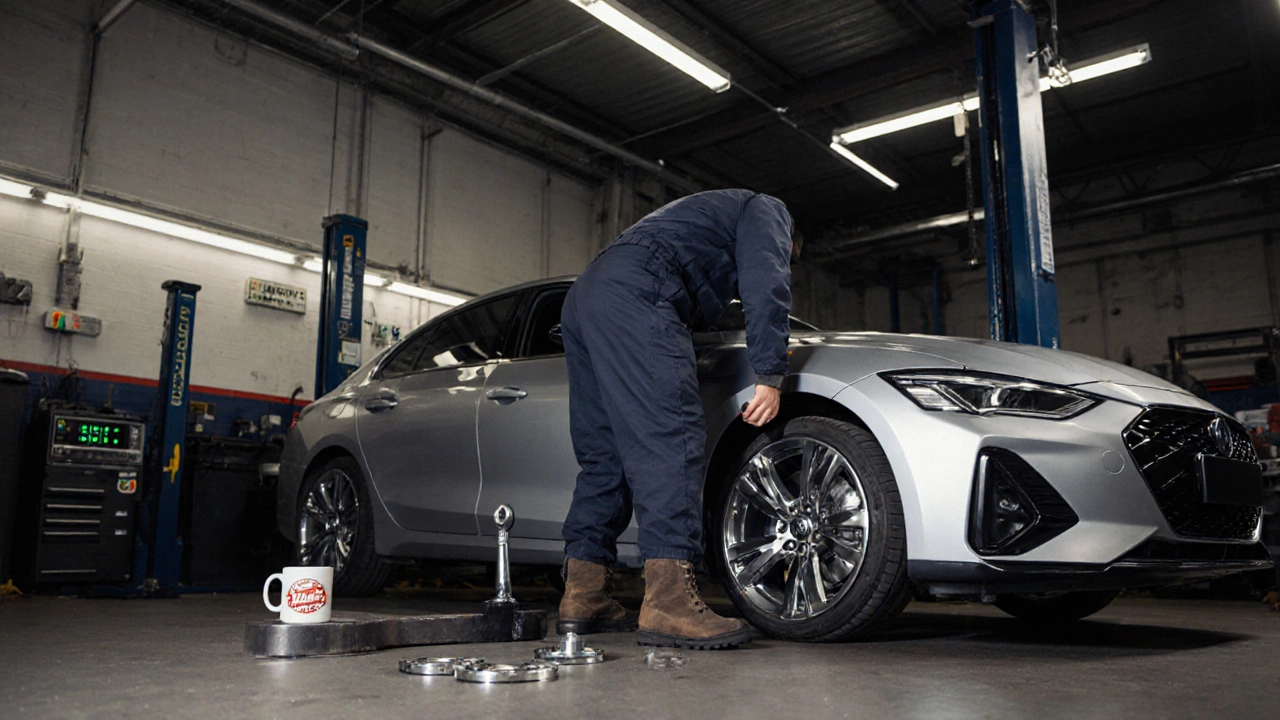Wheel Spacer Safety: Essential Tips for Every Driver
If you’ve ever thought about adding wheel spacers to get a wider stance, you’re not alone. The visual boost is tempting, but the safety side often gets ignored. Below we break down the real impacts on handling, the installation basics, and the hidden risks you should watch.
How Spacers Change Your Car’s Handling
Putting a spacer pushes the wheel outward, which shifts the tire’s contact patch. In theory that gives better grip in corners, but it also moves the suspension geometry. The result can be more toe change, altered scrub radius, and a higher chance of uneven tire wear. Many drivers notice a tighter feel on dry roads, yet feel a bit loose when the pavement gets wet.
Installation Mistakes That Cost Money
The most common error is using the wrong bolt length. A spacer adds thickness, so you need longer bolts to keep the lug nuts from sitting on the spacer itself. Short bolts can strip threads or crack the wheel hub. Another mistake is skipping the torque specification. Over‑tightening can crush the wheel studs, while under‑tightening lets the spacer move during hard cornering. Always use a torque wrench and follow the manufacturer’s numbers.
Don’t forget to check the clearance around the brake calipers and suspension arms. Spacers that are too thick can cause the wheel to rub, leading to premature brake wear or a sudden loss of braking power. A quick visual check after installation—spin each wheel and listen for contact—can save you a lot of trouble later.
Legal limits also matter. Some regions have strict rules about how far a wheel can be offset from the original line. Running afoul of those rules can result in fines or insurance complications if you get into an accident. A quick call to your local MOT centre will tell you what’s allowed in Nottingham.
Maintenance after fitting spacers is just as important. Re‑torque the lug nuts after the first 100 miles, then again after 500 miles. This lets the bolts settle and prevents the wheel from loosening. Keep an eye on the tires for any odd wear patterns – especially on the inner or outer edges – and have a professional check the alignment if you spot something off.
Finally, consider whether you really need spacers. If you’re after a performance gain, upgrading the suspension or getting wheels with the correct offset might be a cleaner solution. Spacers are a quick fix, but they come with a trade‑off in safety and durability.
Bottom line: wheel spacers can look great, but only if you install them right, respect legal limits, and stay on top of bolt torque and tire wear. Follow these steps, and you’ll enjoy the wider look without compromising safety.
Discover whether wheel spacers require alignment, how to install them correctly, and the impact on suspension, tire wear, and safety. Get expert tips and a clear comparison.

